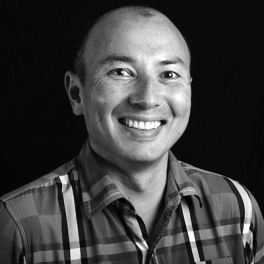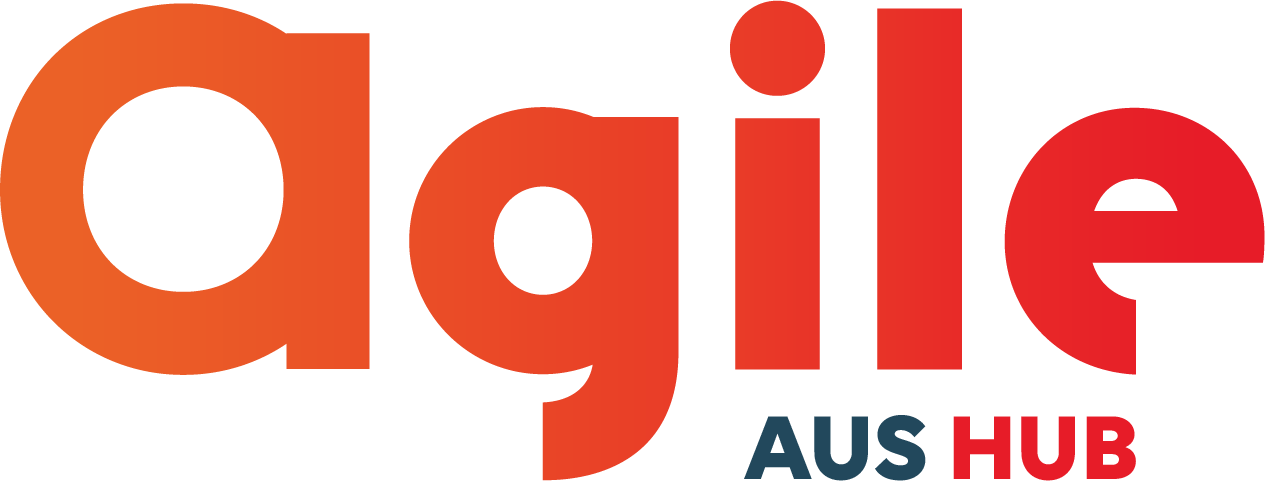The digital landscape is changing
One of Agile Australia 2016’s highly-rated talks will be encoring in Sydney this November at Agile Encore. As part of this compelling Agile afternoon, Richard Weissel (REA Group) will speak on why ‘The heart of Agile is in your local primary school’. In this blog post, Richard will explore how the digital landscape is changing.

“Some experts predict more than 40% of jobs in Australia may disappear over the next 10 to 15 years…. As jobs disappear, new ones are being created. What will those jobs of the future look like and are we educating our children to be ready for them?” (ABC Four Corners, July 4 2016)
At the REA office last week, in collaboration with startup ‘anda’ (http://andaproject.io), we embarked upon what is hoped to be the foundational piece in a longer running program of work addressing this question. In particular, how can Agile organisations, such as REA, better prepare the workforce of the future for what’s coming? Over three days last week, 20 students aged between 10 and 19 participated in a three day “hackathon for kids”.
What did they come up with you ask? Ok, let’s start there. Now, you know those incredibly complex movies that use ‘flash back’ and ‘flash forward’ extensively? Like Memento (2000)? I’ll be honest – they confuse me. I’ve watched Memento twice and I still don’t understand what’s going on. In an effort to confront my fears, I’ve decided to write the plot lines for exactly this type of film. All of it is true…except the future stuff. Although maybe that’s true too? Uh oh – I’m already confused. I ask of you but one thing – bear in mind, during each plot twist, the parallels with your Agile organisation (in the present).
Stay with me; there is a method to this madness. Let’s start at the end, with the day three showcases. Given the single question “what’s wrong with education?”, the students outlined their solutions for the following products or services:
- Waddle: A non-threatening, anonymous by choice, support network for pregnant teenagers…including the fathers, who are often stereotyped as running away. The social space – ‘the pond’; teenagers can connect to ‘quacks’ via the app.
- Teacher Communication: Improving information sharing between educators in order to improve student outcomes. “Why don’t they talk to each other? I have 5 assignments due on the same day and I have band practice, piano practice and all sorts of other stuff going on.”
- My Standard : Addressing the pressure on students to conform to stereotypes of all sorts. For example: Asian kids are good at maths; I’m smart and popular, therefore I don’t have problems.
- National Education Conversation Platform : The fundamental problem is with government and policy – teachers are doing what they must to comply with the education department, but the government are accountable to us, the people.
- iLearn: “Why can’t we have more choice in what we learn?” Students should be able to craft their own education pathways.
- BRICK – rebuild your education brick by brick. Complete certified courses either online or in person.
To say we were impressed is an enormous understatement. Not only were the presentations delivered with a finesse that belied their ages, but this was also the culmination of three days of collaborative work which, for me, underlined the importance of the foundation of the Agile manifesto: individuals and interactions.
The event produced so much worthy of a deep dive that it would be impossible to document it all at once, so I’ve had to be ruthless. In this blog post and in the next, I’m going to discuss a few aspects that, in my opinion, underpinned the success of the three days: trust and relationships; modelling; scaffolding; and feedback.
Flash back (cue fancy transition): Day 1, 9.30am

What you are seeing is 20 students, aged between 10 and 19 (OK – plus two blokes who clearly aren’t). Most of these students didn’t know anyone else on day one. They were deeply uncomfortable; this was crystal clear to anyone looking at the collective group – all it required was an awareness that this might be an issue (remember; parallels to new arrivals in your organisation). How did we address this? You will find no rocket science here; we simply talked to them. Not about work – about their lives and what interests them. Who are they?
This was shortly followed by an ice breaker activity. Now, an ice breaker, to a group of 20 kids (most of whom were teens), can very easily be “lame” (am I showing my age?), so the “fun fact about yourself” task, run by Milly Rowett, was extraordinarily effective in dropping the barriers. On the face of it, it is quite simple – “write down a fun fact about yourself; shuffle; choose a card; try and find that person” – but there are some important principles at play here.
It was non-threatening and non-judgmental. Nobody had to stand in front of a group; there was no hierarchy; it was just individuals interacting one on one, asking a very simple question – the one that was in their hand. The answer: “yes” or “no” – move on. This is significant, as there are many students who are reticent to express themselves openly in front of a new group (look at your workplace – yes, those people are there).
Modelling. Now I’m not talking Derek Zoolander style here (though that would’ve played well), but rather exhibiting behaviours that you would like in others. The REA/anda team were all part of Milly’s activity. This helps establish trust very early on. In addition to discovering that Temma (student) likes horses, I also discovered that Sasha (from anda) likes listening to hip hop music at full volume in her car and that Dean (REA) likes dressing up in mediaeval armour and fighting with swords. This opens the door to new avenues of conversation and banter in the workplace, enhancing interactions between individuals, and building relationships between colleagues.
Flash forward (don’t get dizzy now) : 10.30am day 2

What you are seeing here, in the education space, is an example of what is referred to as ‘scaffolding’; Zinzi Sullivan (sister of Sasha and co-founder of anda) is introducing the double diamond design principle, which allows us to design solutions, based on an early understanding of a problem, in a collaborative and flexible way (sound familiar my fellow agilists?). Scaffolding is exactly as the name suggests – providing supports around a learner (or employee) so that they are able to achieve outcomes that would otherwise have been beyond them. It is, however, essential to gradually remove those scaffolds, so that a person’s level of independent ability is challenged and as a result, raised. As an example, think of the way we provide scaffolding for a toddler learning to walk. We pad the corners of tables to provide a safe environment in which to try (and fail); we hold both hands, then one hand…then a few steps…a few more. The process is no different at the higher order levels of thinking, and as in this example, different individuals require slightly different supports. The lesson here: know your team members’ individual abilities and build upon them.
The students, in their feedback at the end of day one, clearly expressed that they wanted to have spent more time ‘creating’ solutions. This was important feedback and we certainly took it on board when adjusting the plan for day two; however, I honestly believe that the results at the end of day three would not have been anywhere near as impressive if we’d sacrificed any of the relationship building, modelling and scaffolded activities which had been an enormous part of day one. Each of these activities is worthy of an article in itself. What I want to emphasise though, is that all of these activities modelled agility, in terms of taking risk to try something new, using small feedback loops, then trying again, whilst being unafraid of failure.
In the afternoon of day one (subtle flash back there), the REA crew ran six activities, all of which scaffolded and modelled the behaviours we wanted from the students for the event.
Pictured here are just two examples of those activities: Matt Witherow took groups of students through the principles behind electric circuits, by using fruit to create an orchestra (pictured are Kian, left, and Sonny, who is holding the banana ‘drumsticks’).
This, along with the paper aeroplanes task, run by Thomas Snow, were classic examples of working in an iterative process, with continuous improvement based on feedback. Feedback. “Ah, what a smooth segue!” I hear you say.
Feedback can come in many forms and is multi-directional. Take a look at these “how are you feeling?” feedback notes from the students, first thing on day two..
Flash forward (I’m feeling really clever now): 9.30 am day two

Plenty of sleepy teens by the look of it; I guess that shouldn’t have been a surprise, but again, being aware of this and being able to modify activities and behaviour based on regular feedback, is absolutely critical to the success of any project. As a result of this feedback, here’s the collaborative ‘energiser’ activity, which completely transformed the mood in the room. You’re looking at Noah and Ali (foreground – facing camera) and Max, Will, Dean and Milly (background).

In terms of our Agile organisations, there’s a lot in this – how effectively do we respond to our feedback loops? How often do we check in on the ‘mood’ of our teams?
Here’s the mood at the start of day three…the result of some beautifully scaffolded activities which built trust, relationships and encouraged creativity and experimentation.

Look – no adults (Dragan, foreground, is only 17 – but 6 foot 7!)
When I arrived that morning (of the last day), Sasha and Zinzi, along with the REA crew, were standing around having coffee; the kids were busily working away on their projects, collaboratively, creatively and so incredibly respectfully. This was testimony to the planning and energy that had gone into the preceding 48 hours.
This brings us back to the present, where the story started – the outstanding showcases, to which the parents and selected staff were invited…

…and the winner? Team Waddle, who came up with the support network for teenage pregnancies. We’re currently discussing the “where to now?” question for all of the teams; the students, when asked, all wanted to continue working on their projects. Again, there is so much in this statement worthy of closer attention, but what stands out to me, is the power of giving individuals and teams the trust and support to create something over which they feel ownership, and an environment in which they feel unafraid of failure. This is what will prepare us for the future digital landscape. This is where we, the Agile community, have a responsibility.
Flash forward : 2031, 15 years from now.
?
The students from last week will be in their late twenties, early thirties…let’s help paint the right picture in here.
The future is in our students’ hands, but they’re going to need some scaffolding. Are you going to help shape the future, or wait for it to arrive?
If your organisation is interested in running an event with the technologists of tomorrow (and I hope it is), hit up Sasha and Zinzi at anda.
To find out more about Agile Encore, visit the website.

Stay in the loop
To receive updates about AgileAus and be subscribed to the mailing list, send us an email with your first name, last name and email address to signup@agileaustralia.com.au.



0 Comments